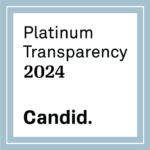Improving diversity in cancer clinical trial enrollment has become an increased priority among oncology researchers.
However, strict exclusion and inclusion criteria in these trials have become a major barrier to patient access, limiting generalizability of trial results.
“There is widespread recognition that cancer clinical trial accrual remains a persistent challenge,” David E. Gerber, MD, associate director of clinical research at UT Southwestern’s Harold C. Simmons Comprehensive Cancer Center, told Healio. “Difficulties recruiting and retaining representative participants result in prolonged study duration, premature trial closure, heightened costs of clinical research and delayed advances in the field. Many oncology trials close prematurely, and those that do finish are generally extremely costly.”
To address the need for more inclusive cancer clinical trial enrollment, Gerber and an international team of researchers and policymakers have drafted new recommendations for lung cancer trial eligibility criteria. Gerber, in part, led the working group, which included representatives of FDA, NCI, pharmaceutical companies and LUNGevity Foundation.
Gerber spoke with Healio about the goals of the recommendations, published in JAMA Oncology, the need to standardize inclusion criteria in lung cancer clinical trials, and how the recommendations might simplify and expedite the clinical trial enrollment process.
Healio: Who is represented in the working group for this effort to standardize eligibility criteria for advanced, non-small cell lung cancer clinical trials?
Gerber: The working group was formed as part of LUNGevity Foundation’s Scientific and Clinical Research Roundtable initiative. Members of the working group were deliberately chosen to represent key members of the clinical trial ecosystem, especially those involved in protocol design. Members included leaders of the thoracic oncology team at the FDA; clinicians who designed and conducted clinical trials and had published manuscripts on clinical trials; members of the NCI Cancer Therapy Evaluation Program, including those who had previously developed a revised clinical trial protocol template with expanded eligibility criteria with Friends of Cancer Research and ASCO; and pharmaceutical industry sponsors.
Healio: How might the current criteria hinder access to these trials for some patients?
Gerber: Multiple factors contribute to the problems recruiting and retaining representative participants in clinical trials, including complexity of trial protocols, lack of access to trial sites and — in particular — stringent eligibility criteria.
In the U.S., the average age at lung cancer diagnosis is older than 70 years, and 85% of patients are current or former smokers. As a result, cardiopulmonary medical comorbidities occur frequently, may not necessarily interfere with standard treatment, and yet result in trial exclusion. Furthermore, some eligibility criteria, such as strict minimum blood counts or prohibited concomitant medications, may disproportionately affect underrepresented minorities, thereby exacerbating disparities in care and limiting generalizability of trial results.
Healio: How does inclusion criteria for lung cancer clinical trials run the risk of both being too specific (thus, not replicable) and too general (thus, not providing items that can be populated)?
Gerber: We now recognize that the clinical entity of lung cancer is several diseases, each characterized by distinct molecular features. Similar categorization is occurring in other malignancies. We designed the proposed eligibility template to serve a broad population — advanced NSCLC — yet be modifiable to more specific subtypes. Indeed, in many trials, most eligibility criteria reflect patient characteristics rather than features of the cancer under study. As such, much of the proposed eligibility template could be applied to other cancer types.
As a next step, some working group participants expressed interest in developing an automated web-based platform for creation of a clinical trial protocol. With such a tool, investigators and sponsors could rely on a dropdown menu of items listed in the framework to populate a protocol, having opportunity to justify deviation from the proposed language.
Healio: What key items did the group identify for inclusion in lung cancer clinical trials?
Gerber: The forthcoming FDA draft guidance contains 13 eligibility categories, addressing disease stage, biomarkers, performance status, organ function, brain metastases, chronic viral infections and prior or concurrent malignancy. In several areas, provisional recommendations may be less stringent than eligibility criteria in many current trials. For example, it is suggested to allow ECOG 2 performance status and to require justification if those individuals are excluded. Patients with untreated, asymptomatic brain metastases with low likelihood of needing near-term central nervous system-directed therapy may be enrolled. Patients with prior or concurrent malignancy may be enrolled if the other cancer is unlikely to interfere with the safety or efficacy assessment of the investigational agent.
Healio: How will the forthcoming FDA draft guidance simplify or harmonize trial inclusion?
Gerber: Standardizing eligibility criteria on public-facing websites, such as clinicaltrials.gov, may simplify searches by patients, caregivers or referring clinicians. A uniform framework might also enhance the ability to perform cross-trial evaluations. Once a potential trial is identified, the proposed eligibility criteria may simplify and speed up the screening and enrollment process — for instance, by not mandating local therapy to a clinically insignificant brain metastasis before starting study therapy. Similarly, we discourage requirements for central biomarker testing and study-specific biopsies if local testing and archival tissue will provide adequate information.
